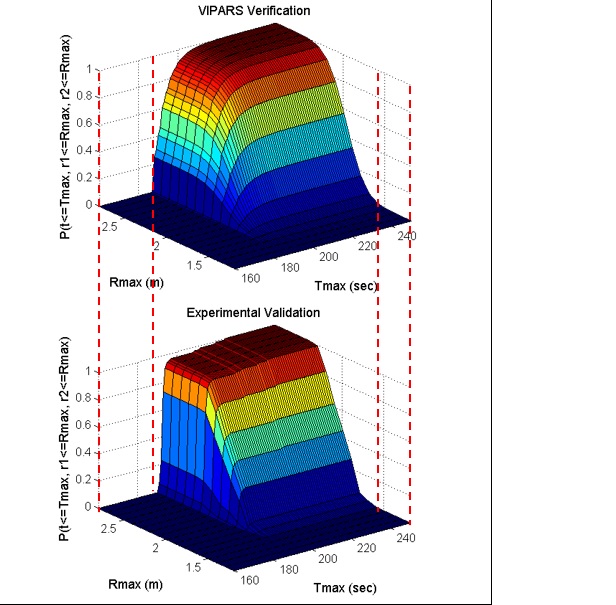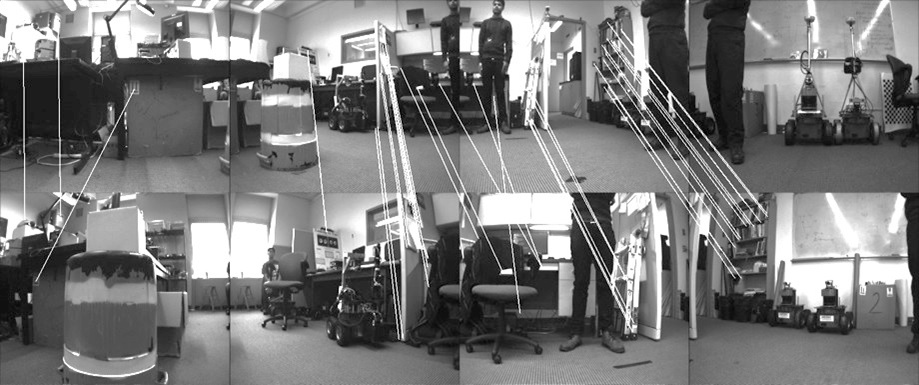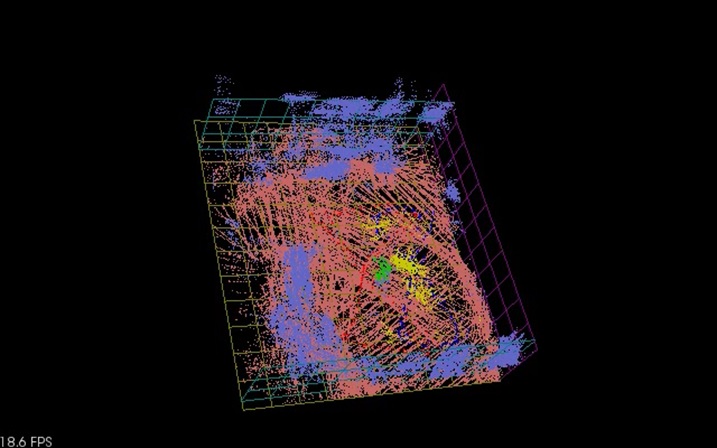
Difference: FRCVPublicProject (4 vs. 5)
Revision 52017-07-12 - AnneMarieBogar
| Line: 1 to 1 | ||||||||
|---|---|---|---|---|---|---|---|---|
Overview of Research Projects in Progress at the FRCV Lab | ||||||||
| Line: 6 to 6 | ||||||||
| In research being conducted for the Defense Threat Reduction Agency (DTRA), we are concerned with robot missions that may only have a single opportunity for successful completion, with serious consequences if the mission is not completed properly. In particular we are investigating missions for Counter-Weapons of Mass Destruction (C-WMD) operations, which require discovery of a WMD within a structure and then either neutralizing it or reporting its location and existence to the command authority. Typical scenarios consist of situations where the environment may be poorly characterized in advance in terms of spatial layout, and have time-critical performance requirements. It is our goal to provide reliable performance guarantees for whether or not the mission as specified may be successfully completed under these circumstances, and towards that end we have developed a set of specialized software tools to provide guidance to an operator/commander prior to deployment of a robot tasked with such a mission. We have developed a novel static analysis approach to analysing behavior based programs, coupled with a Bayesian network approach to predicting performance. Comparing predicted results to extensive empirical validation conducted at GATech's mobile robots lab, we have shown we can verify/predict reasltic performance for waypoint missions, multiple robot missions, missions with uncertain obstacles, missions including localization software. We are currently working on human-in-the-loop systems. | ||||||||
| Changed: | ||||||||
| < < |  | |||||||
| > > |  | |||||||
| Changed: | ||||||||
| < < | Multilingual Static Analysis (MLSA) | |||||||
| > > | Multilingual Static Analysis (MLSA) | |||||||
| Changed: | ||||||||
| < < | Leveraging the static analysis work developed for DTRA, we are looking at multilingial (e.g., software that includes programs in several languages) to provide refactoring and other information for very large, multi language software code bases. This project is funded by a two year grant from Bloomberg NYC. The objective of the project is to make a number of open-source MLSA tools available for general use and comment. For more details, see here. | |||||||
| > > | Leveraging the static analysis work developed for DTRA, we are looking at multilingial (e.g., software that includes programs in several languages) to provide refactoring and other information for very large, multi language software code bases. This project is funded by a two year grant from Bloomberg NYC. The objective of the project is to make a number of open-source MLSA tools available for general use and comment. For more details, see here. | |||||||
Space-Based Potential Fields: Exploring buildings using a distributed robot team navigation algorithm. In this work we propose an approach, the Space-Based Potential Field (SBPF) approach, to controlling multiple robots for area exploration missions that focus on robot dispersion. The SBPF method is based on a potential field approach that leverages knowledge of the overall bounds of the area to be explored. This additional information allows a simpler potential field control strategy for all robots but which nonetheless has good dispersion and overlap performance in all the multi-robot scenarios while avoiding potential minima. Both simulation and robot experimental results are presented as evidence. | ||||||||
| Changed: | ||||||||
| < < |  | |||||||
| > > |  | |||||||
Visual Homing with Stereovision | ||||||||
| Line: 24 to 24 | ||||||||
| In current work we have modified the HSV code to use a database of stored stereoimagery and we are conducting extensive testing of the algorithm. | ||||||||
| Changed: | ||||||||
| < < |  | |||||||
| > > |  | |||||||
Ghosthunters! Filtering mutual sensor interference in closely working robot teams | ||||||||
| Line: 32 to 32 | ||||||||
| Using a team of two Pioneer 3-AT robots with tilted SICK LMS-200 laser sensors, we evaluate several techniques for fusing the laser ranging information so as to eliminate the mutual interference. There is an extensive literature on the mapping and localization aspect of this problem. Recent work on mapping has begun to address dynamic or transient objects. Our problem differs from the dynamic map problem in that we look at one kind of transient map feature, other robots, and we know that we wish to completely eliminate the feature. We present and evaluate three different approaches to the map fusion problem: a robot-centric approach, based on estimating team member locations; a map-centric approach, based on inspecting local regions of the map, and a combination of both approaches. We show results for these approaches for several experiments for a two robot team operating in a confined indoor environment . | ||||||||
| Changed: | ||||||||
| < < |  | |||||||
| > > |  | |||||||
Older Projects | ||||||||
| Line: 44 to 44 | ||||||||
| - Cognitive Robotics: ADAPT. Synchronizing real and synthetic imagery. | ||||||||
| Changed: | ||||||||
| < < | ||||||||
| > > |
| |||||||
| ||||||||
View topic | History: r12 < r11 < r10 < r9 | More topic actions...
Ideas, requests, problems regarding TWiki? Send feedback